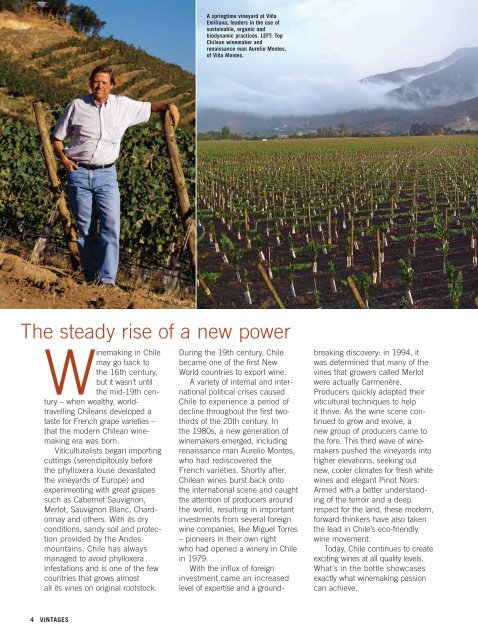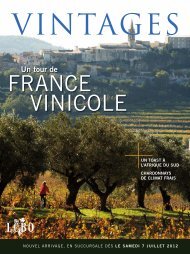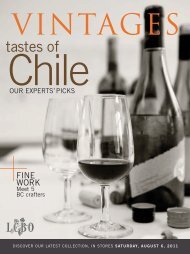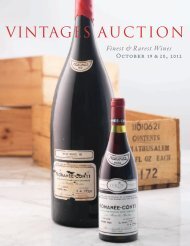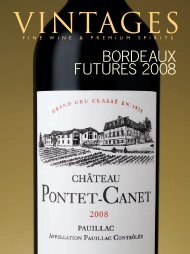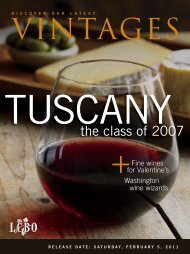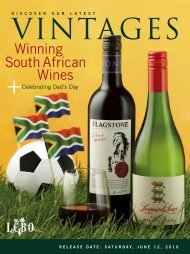You also want an ePaper? Increase the reach of your titles
YUMPU automatically turns print PDFs into web optimized ePapers that Google loves.
The steady rise of a new power<br />
Winemaking in Chile<br />
may go back to<br />
the 16th century,<br />
but it wasn’t until<br />
the mid-19th century<br />
– when wealthy, worldtravelling<br />
Chileans developed a<br />
taste for French grape varieties –<br />
that the modern Chilean winemaking<br />
era was born.<br />
Viticulturalists began importing<br />
cuttings (serendipitously before<br />
the phylloxera louse devastated<br />
the vineyards of Europe) and<br />
experimenting with great grapes<br />
such as Cabernet Sauvignon,<br />
Merlot, Sauvignon Blanc, Chardonnay<br />
and others. With its dry<br />
conditions, sandy soil and protection<br />
provided by the Andes<br />
mountains, Chile has always<br />
managed to avoid phylloxera<br />
infestations and is one of the few<br />
countries that grows almost<br />
all its vines on original rootstock.<br />
4 VINTAGES<br />
A springtime vineyard at Viña<br />
Emiliana, leaders in the use of<br />
sustainable, organic and<br />
biodynamic practices. LEFT: Top<br />
Chilean winemaker and<br />
renaissance man Aurelio Montes,<br />
of Viña Montes.<br />
During the 19th century, Chile<br />
became one of the first New<br />
World countries to export wine.<br />
A variety of internal and international<br />
political crises caused<br />
Chile to experience a period of<br />
decline throughout the first twothirds<br />
of the 20th century. In<br />
the 1980s, a new generation of<br />
winemakers emerged, including<br />
renaissance man Aurelio Montes,<br />
who had rediscovered the<br />
French varieties. Shortly after,<br />
Chilean wines burst back onto<br />
the international scene and caught<br />
the attention of producers around<br />
the world, resulting in important<br />
investments from several foreign<br />
wine companies, like Miguel Torres<br />
– pioneers in their own right<br />
who had opened a winery in Chile<br />
in 1979.<br />
With the influx of foreign<br />
investment came an increased<br />
level of expertise and a ground-<br />
breaking discovery: in 1994, it<br />
was determined that many of the<br />
vines that growers called Merlot<br />
were actually Carmenère.<br />
Producers quickly adapted their<br />
viticultural techniques to help<br />
it thrive. As the wine scene continued<br />
to grow and evolve, a<br />
new group of producers came to<br />
the fore. This third wave of winemakers<br />
pushed the vineyards into<br />
higher elevations, seeking out<br />
new, cooler climates for fresh white<br />
wines and elegant Pinot Noirs.<br />
Armed with a better understanding<br />
of the terroir and a deep<br />
respect for the land, these modern,<br />
forward-thinkers have also taken<br />
the lead in Chile’s eco-friendly<br />
wine movement.<br />
Today, Chile continues to create<br />
exciting wines at all quality levels.<br />
What’s in the bottle showcases<br />
exactly what winemaking passion<br />
can achieve.


